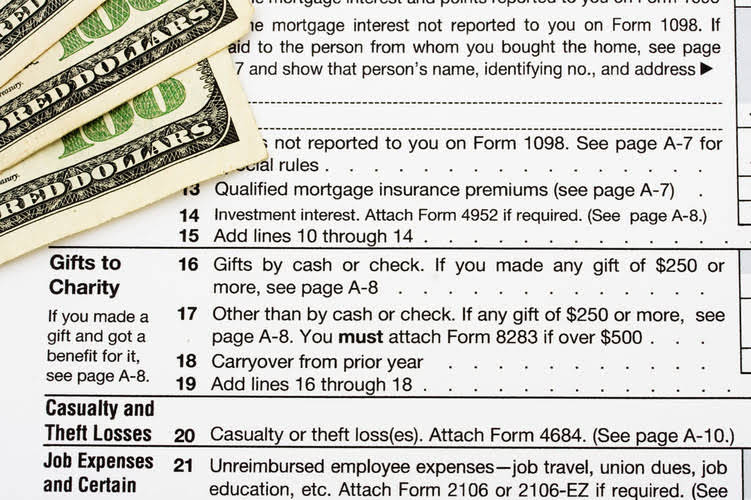An asset’s initial cost and useful life are also the same using any method. Many accountants use a simple, easy-to-use method called the straight-line basis. This method straight line depreciation spreads out the depreciation equally over each accounting period. Unlike more complex methodologies, such as double declining balance, this method uses only three variables to calculate the amount of depreciation each accounting period.
Straight-line depreciation examples in the real world
- Talk with your tax advisor about Section 1031 exchanges or Qualified Opportunity Funds.
- A common system is to allow a fixed percentage of the cost of depreciable assets to be deducted each year.
- The rate remains constant over time, but the value decreases because we multiply the rate with a lower depreciable base each year.
- All fixed assets are initially recorded on a company’s books at this original cost.
- Calculating depreciation using the straight-line method is a systematic approach to allocating the cost of an asset over its useful life.
The business expects the machine to produce 100,000 units over its useful life. The straight-line depreciation method posts an equal amount of expenses each year of how is sales tax calculated a long-term asset’s useful life. Business owners use it when they cannot predict changes in the amount of depreciation from one year to the next. Depreciation expenses are posted to recognise a fixed asset’s decline in value. The straight-line method is the most common method used to record depreciation.
Double-Declining Balance Method

The straight-line method of depreciation can be used to depreciate almost any type of tangible assets such as property, furniture, computers, and equipment. As a startup founder and business owner, you’re likely juggling a lot of financial balls. Dealing with assets that lose value over time, like computers or machinery.
Method to Get Straight Line Depreciation (Formula)

Straight-line depreciation allows you to distribute the cost of assets evenly over their useful lives, which helps in matching expenses with revenue generated from those assets. Plus, with this method, depreciation expenses remain consistent, simplifying financial planning and budgeting. The declining-balance approach is another accelerated straight-line method. It applies a higher depreciation rate in the early years of an asset’s life. This method mostly benefits assets that lose value quickly or become obsolete rapidly, such as computer equipment or software used in your retail operations. By using this method, you’re spreading the $9,000 cost ($10,000 initial cost minus $1,000 salvage value) evenly over the five-year useful life of the point-of-sale system.
This entry will be the same for five years, and at the end of the fifth-year asset net book value will remain only USD 5,000. This asset will not be depreciated, but the company still uses it as normal or make the disposal. Suppose an asset has original cost $70,000, salvage value $10,000, and is expected to produce 6,000 units. Salvage value, also known as residual value or scrap value, represents the estimated worth of the asset at the end of its useful life. It is the expected amount the asset could be sold for or its residual value when it is no longer usable.
- It is most useful when an asset’s value decreases steadily over time at around the same rate.
- Thanks to its simple calculation, straight-line depreciation is one of the most commonly used deprecation methods.
- This ensures clearer and more accurate financial reports, setting your business up for long-term success.
- This account accumulates the depreciation posted each year, and each asset has a unique accumulated depreciation account.
- However, businesses must consider factors such as market value, alternative depreciation methods, and the impact on financial statements before applying straight-line depreciation.
- This is very important because we need to calculate depreciable values or amounts.

Let Law Firm Accounts Receivable Management us understand the concept of straight line method for depreciation with the help of a few suitable examples. There are various accounting softwares that help in calculating the same accurately and quickly. However, this process assumes that the fall in value is equal in all years, which may not always be practical. But it helps in budgeting and financial forcasting in a systematic manner.
- Accumulated depreciation is a contra asset account, so the balance is a negative asset account balance.
- The specific tax implications vary depending on the tax laws and regulations of the jurisdiction in which the business operates.
- It provides a fair and straightforward way to allocate the asset’s cost across its entire useful life, resulting in consistent depreciation expenses in your financial reports.
- In setting up your small business accounting system, knowing your depreciation methods can help you choose the right method that matches the pattern of usage of your fixed assets.
- As such, the income statement is expensed evenly, and so is the asset’s value on the balance sheet.
This predictability can be particularly valuable for retail businesses that need to make long-term financial plans or projections. Then the depreciation expenses that should be charged to the build are USD10,000 annually and equally. This method does not apply to the assets that are used or performed are different from time to time. Straight-line depreciation affects taxes by reducing taxable income through depreciation expense deductions.






